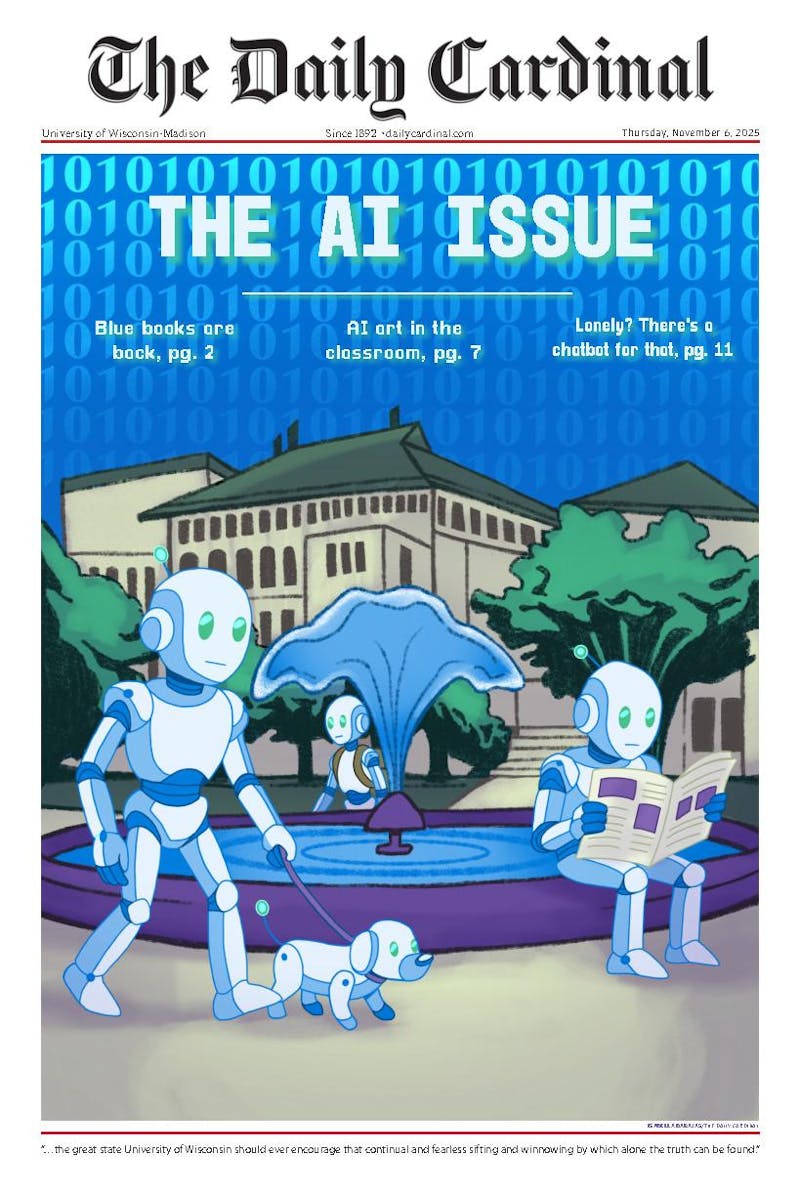Just over 30 years ago, Edgar Spalding was hired as a professor in the botany department at the University of Wisconsin-Madison.
He was trained as a plant physiologist, having just finished a postdoctoral experience at Yale University. During his graduate research, he became interested in studying plant cells and their internal interactions with the environment, forming questions that would inspire his career.
“How does a little seedling, when it's come up through the soil, realize that it's reached the light and now it's time to photosynthesi[ze]?” Spalding told The Daily Cardinal.
In 2025, as Spalding finishes up his research projects a year after retiring, he’s getting his answers.
Spalding, along with doctoral student Julian Bustamante and data scientist Nathan Miller, published a study on Jan. 6 in the academic journal “Current Biology,” where they discovered new locations in plant stems that detect light and trigger photosynthesis.
Studying Arabidopsis, a plant commonly used as a model system in plant biology, where researchers can test and manipulate genes, Spalding and his team investigated a mutant version of the plant in which the hypocotyl (seedling stem) grew four times higher than a wild stem.
They discovered the mutant was lacking cryptochrome-1 (referred to as cry1), a photoreceptor that stores reserves for the sprout and stunts growth once the hypocotyl emerges. The researchers used three plants to prove that the cry1 photoreceptor was saving energy in case the plant's growth was interrupted — normal plants, plants missing cry1 and plants missing cry1 that have had cry1 inserted back in.
By using machine-learning-based image analysis to take photos of the plants sprouting every five minutes, Spalding and his team could track when cry1 kicked in and stopped elongation.
“When you turn the light on, the hot colors turn cool because all those cells have ceased elongating,” Spalding said. “Then you do that experiment with the cry1 mutant, which we know after four days is really tall. It doesn't [stop] somewhere along the line, that inhibition doesn't happen.”
This discovery allowed the researchers to piece together that photoreceptors were acting in different parts of the hypocotyl, enabling mutant plants to grow to new heights when not inhibited by cry1. Without cry1, the growing region at the top of the stem was able to expand, a new realization for Spalding and his team.
“We're proposing that cry1s job is to sense light and shut down those small cells at the top and keep them in an inhibited state and only release them to expand if the plant is darkened again by some environmental circumstance,” Spalding said. “That would increase its odds of getting up into the light for survival.”
Spalding said biotechnologists may use this information to better engineer a seedling more resistant at this stage of development, whether it be finding a way to trigger the photoreceptors reserves or overriding the cry1 control if they wanted a taller stem.
Although Spalding said this research may not impact Wisconsin’s biggest crop, corn, it may have implications for other dicot crops that have similar genetic makeup to Arabidopsis, such as soybeans or alfalfa.
“If something happens [and the plant] doesn't see the light, we understand better now what the plant does to adapt or to react to that situation,” Spalding said. “For me, it’s a nice bookend to my career.”
John Ernst is the features editor for The Daily Cardinal. He has written in-depth on refugee resettlement, Milwaukee Public Schools and rural issues, including water contamination and immigrant farming. He also reported for the campus news, science and sports desks.






